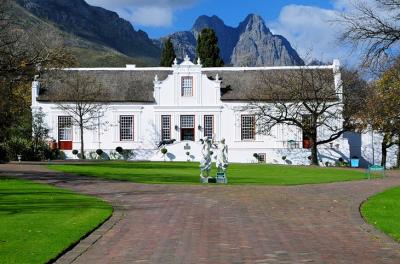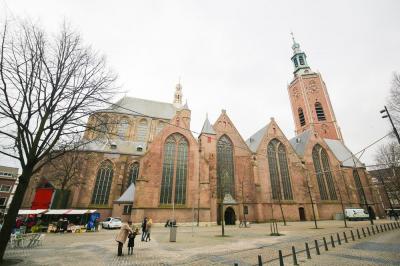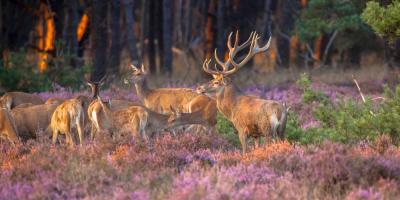Welcome to Chile
Chile offers a plenty of activities for outdoor enthusiasts including: fly-fishing, horseriding, skiing, surfing, volcano-climbing and white-water rafting. Due to the popularity of organizing tourism with adventure features, many tour operators now offer single and multi-day trips with guides. You’ll find the largest choice of operators in the Lake District of Pucón. The north of the country comprises mostly deserts with harsh conditions, so there are fewer options here, operators as the rule offer mountain biking and altiplano jeep trips. Make sure to have appropriate insurance before participating in such activities.
Rafting and Kayaking
With the numerous rivers and streams to be found in Chile, rafting is one of the top sports with the incredible Río Bío Bío and the Río Futaleufú that attract a great number of international visitors annual. Most rafting trips are offered from a single day to eight days in length. If you raft down the Río Bío Bío, you also have the possibility of hiking Volcán Callaquén. For calmer options, the Río Maipo near Santiago, the Río Trancura close to Pucón, and the Río Petrohue nearby Puerto Varas are all good options. The first choice is good for a day trip if you are based in Santiago; the other two are only available as half-day trips, but it is seldom necessary to book places in advance. Rafting trips are generally thoroughly organized and run. But of course it’s a good idea to vet potential guides properly to avoid unpleasant and dangerous surprises.
Another watersport that is a good option in Chile is kayaking. However, choices for the sport as an organized excursion are more limited and you’d likely be better off arranging trips through any of the US-based companies that are camped on the Bío Bío and Futaleufú. In the quiet, flat southern fjords of the country, sea kayaking is extremely popular. There are other locations, too, for the sport, but be careful if you’re planning to travel through the waters of the Chilean navy as they’re rather tetchy about unknown vessels in their territory. If this is a part of your trip, be sure to inform the Chilean embassy or consulate in your home country before you leave for Chile.
Hiking
Since Chile is fairly empty with wide regions of wilderness, the opportunities for mesmerizing hikes are great. Most Chileans dislike touring too far from where their cars are parked when touring the countryside, so trails that do not provide access for vehicles are usually very peaceful. With this nonchalance for hiking, however, you can observe the dearth of reliable maps and long-distance trails. Don’t let this put you off though because you’ll be missing some truly spectacular landscapes.
Hiking is mostly done in the south of the country where the land is lusher and hot springs, lakes, volcanoes and waterfalls dot the landscape unlike the desert that dominates the northern regions. You’ll find most of the best trails in reserves. National parks and rangers are generally good at advising hikers about the paths available. Make sure you let the rangers know if you’ll be hiking overnight so as not to waste their time searching for you unnecessarily. There are few hikes that are longer than a day. The condition and maintenance of trail signs vary significantly between parks while trails in more rural regions are difficult to follow.
Torres del Paine in the south is, without a doubt, the country’s favourite location for hiking. The views are mesmerizing but trails are rather crowded in the first two months of the year. It’s worth exploring the less known trails between Santiago and Tierra del Fuego. Here you can be faced with the trails of all sorts: from narrow trails in the Andes to glacial hikes off the Carretera Austral.
Camping outside of official campsites is prohibited in many parks. Campers must understand that bush fire and forest fire are a real danger in the country, so you have to be confirmed where fire can appear and to keep an eye on it. Also, do not resort to chopping down the local flora for firewood as most of it is endangered in the country.
It’s essential to take enough drinking water with you on your hike in addition to sunscreen, a map and a compass, a hat and layered clothing for warmth. Also, be advised that nighttime temperature is significantly low. It’s also possible to get lost while hiking so prepare all supplies regardless of the planned length of the hike. Hikers are also asked to assist in the conservation of the local environment so bury human waste away from rivers and lakes, burn or carry your trash, and use eco-friendly products if you bathe in the lakes and streams.
Climbing
The possibilities for climbing are vast on the enormous Andean cordillera. It’s possible to trek to numerous volcanoes in the north including Volcán Ojos del Salado (6950m), Volcán Llullaillaco (6739m) and Volcán Parinacota (6330m). All of these treks are for skilled and experienced climbers. You will also need to do the organization procedures for these trips as there are few options for guided trips. Exhilirating climbs, which require minimal experience, in the central Andes can be done at Volcán Tupungato (6750m) and Volcán Marmolejo (6100m) and the southern regions at Volcán Osorno (2652m) and Volcán Villarrica (2840m).
Unfortunately, any climbing that takes place on a mountain situated on a border with another country (like most of the top Andean peaks) requires advance permission from the Dirección de Fronteras y Límites (DIFROL). This involves writing to, faxing or emailing DIFROL with the proposed dates of your climb; the full name, nationality, birth date, address, passport number and occupation of each person participating in the climb; and your entry and exit dates in Chile. Once granted, permission is issued on paper and must be shown to Conaf before you begin your ascent. For peaks that are not located in national parks, the permission slip needs to be presented at the closest carabineros station to the starting point of your climb. You should find your itinerary changes once you are already in the country, the permission slip can be adjusted (or you can apply for a new one) at the Gobernación in the capital of each province. It’s also possible to apply at the embassy prior to departure or to print out and to mail the form on their website.
Fly-fishing
Known for being one of the world’s best locations for fly-fishing, it’s easy to see that Chile deserves its reputation when you see the crystalline waters that teem with both salmon (Atlantic and silver) and various specimens of trout (brook, brown and rainbow). Despite these fish has been introduced to Chile specifically for the sport of fly-fishing, the wild population has grown successfully although it is still supplemented extensively by domestic fish farms. Each region has its own season, but it usually falls between November and May.
Although the Lake District has originally dominated the sport and still has a number of fantastic options, several upper-end fishing lodges have been developed on the more rural but crystalline waters of the Aisén; most of these lodges cater for rich clients from North America.
Most fishing in the Lake District takes place from riverboats while motor dinghies are usually used to navigate the channels, fjords and islets of the Aisén where the shallow waters of a remote river provide the ideal location from which to fish. Equipment typically includes a light six or seven weight rod, dry flies and brightly coloured streamers. Most catches average 1kg – 3kg in weight, but catch-and-release is a standard policy for most operators.
Skiing
You won’t find better skiing on the continent than that offered in Chile. Santiago is a good base for the best resorts and slopes in the country including El Colorado, La Parva, Valle Nevado and world-famous Portillo. Termas de Chillán in the south is equally formidable and popular.
Horse-trekking
The diverse landscapes of Chile are well-explored from horseback with the best options available in the Central Valley and around Santiago where horseback riding is a long-standing way of life for the locals. Locals typically guide trips as they know the paths of the mountains exceptionally well due to their springtime work of herding cattle to the pastures in the mountains. A typical day involves five to six hours of riding ending with an open fire barbecue washed down by the copious amount of Chilean wine. Enjoy unobstructed star gazing before turning in for the night in the tents carried by mules.
Because of the terrain of the central Andes, cantering is not permitted, so riding treks are unlikely to be faster than a walk. Patagonia is a better option for faster riding thanks to the expansive grasslands, but the weather is usually wetter here.
Mountain Biking
The dirt roads in Chile are ideal for cycling, but it’s essential to take a mountain bike because the roads are dotted with a number of potholes. If you’re planning a serious trip, either bring your own bike or buy it in Santiago because quality rentals are scarce. However, bikes and other things you need are provided if you do an organized bike trip. Patagonia and Tierra del Fuego are not good destinations for cycling in the summer due to the persistent and fierce wind.
Surfing
More and more surfers are being drawn to Chilean beaches for the year-round breaks of the Pacific Ocean. The best of them can be found near Rancagua, around Pichilemu, where the annual National Surfing Championships are held. However, the northern (warmer) seas near Iquique and Arica are also gaining popularity.
The following list of operators is certainly not complete due to the constant opening of new companies. However, an up-to-date list for each region is available at local Sernatur offices.
Kayaking
1. Al Sur Expediciones: This is one of the Lake District’s most prominent companies for tourists that organizes sea kayak tours to Puerto Montt’s southern fjords.
2. Bío Bío Expeditions: Experienced kayakers can hire kayaks from this company, which also conducts rafting tours down the Bío Bío or Futaleufú.
Skiing
Comprehensive ski resort packages as well as hot-air ballooning and flights on gliders and cockpit biplanes are available from this operator’s national programme near Santiago and the Termas de Chillán.

.jpeg)





